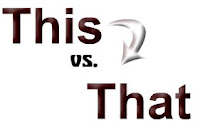
Hibernation is a feature of many computer operating systems where the contents of RAM are written to non-volatile storage such as a hard disk, as a file or on a separate partition, before powering off the computer.
On Macs, a feature known as Safe Sleep saves the contents of volatile memory to the system hard disk each time the Mac enters Sleep mode.
Sleep mode refers to a low power mode for electronic devices such as computers, televisions, and remote controlled devices. These modes save significant electrical consumption compared to leaving a device fully on and idle but allow the user to avoid having to reset programming codes or wait for a machine to reboot.
Sleep mode can go by many different names, including Stand By (for Microsoft Windows 95-Server 2003), Sleep (for Mac OS 8-Mac OS X, Windows Vista, Windows 7, Windows Server 2008), and Suspend (Linux). When placed in this sleep mode, aside from the RAM which is required to restore the machine's state, the computer attempts to cut power to all unneeded parts of the machine. Because of the large power savings, most laptops automatically enter this mode when the computer is running on batteries and the lid is closed.
Though Sleep and Hibernate are generally thought as two separate functions, some modern portable Macintoshes, Windows Vista (termed Hybrid Sleep), and some specially configured Linux machines also feature a variation of Sleep mode that incorporates the strengths of Hibernate. The RAM is copied to the hard drive before sleep mode is initiated, preserving the RAM contents in the event of a power loss.
Summing it all up - For Windows 7:
Sleep is a power-saving state that allows a computer to quickly resume full-power operation (typically within several seconds) when you want to start working again. Putting your computer into the sleep state is like pausing a DVD player—the computer immediately stops what it’s doing and is ready to start again when you want to resume working.
Hibernation is a power-saving state designed primarily for laptops. While sleep puts your work and settings in memory and draws a small amount of power, hibernation puts your open documents and programs on your hard disk, and then turns off your computer. Of all the power-saving states in Windows, hibernation uses the least amount of power. On a laptop, use hibernation when you know that you won't use your laptop for an extended period and won't have an opportunity to charge the battery during that time.
Hybrid sleep is designed primarily for desktop computers. Hybrid sleep is a combination of sleep and hibernate—it puts any open documents and programs in memory and on your hard disk, and then puts your computer into a low-power state so that you can quickly resume your work. That way, if a power failure occurs, Windows can restore your work from your hard disk. When hybrid sleep is turned on, putting your computer into sleep automatically puts your computer into hybrid sleep. Hybrid sleep is typically turned on by default on desktop computers.
Resource(s): windows.microsoft.com, Wikipedia
Resource(s): windows.microsoft.com, Wikipedia





No comments:
Post a Comment
Hey! Thanks for leaving your comment!